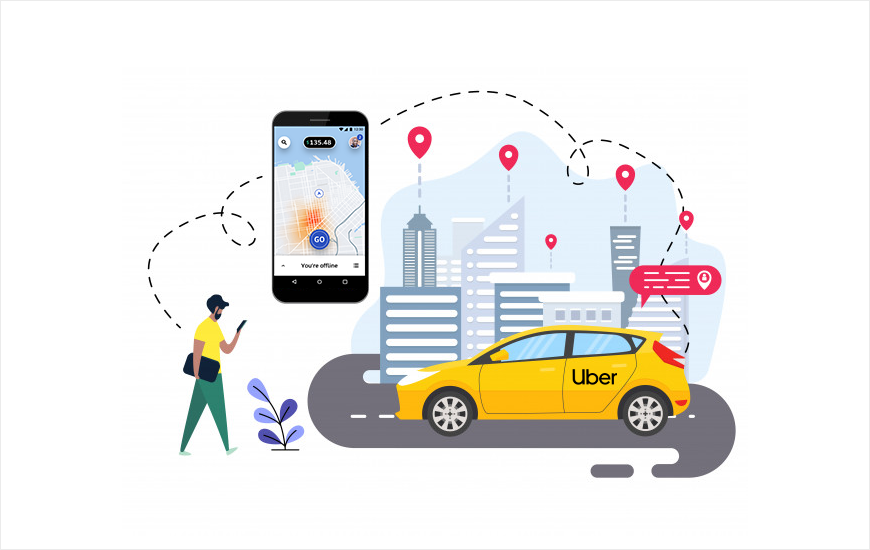
Uber, a well-known transportation company worldwide, has completely changed how people travel. It started in 2009 and has drastically improved the old taxi system by offering a simple and quick ridesharing service through a smartphone app.
Uber’s success is undeniable, thanks to its innovative business model and user-friendly app. Reports show that Uber generated $31.8 billion in revenue in previous years, sparking interest in many to understand the cost to develop app like Uber.
Yet, if you are looking to make app like Uber, you have to learn more than just its development cost. You need to learn how Uber generates revenue which is your main purpose of investing in the industry.
So, here we are going to discuss the same – the revenue generation model of Uber.
Uber Revenue Model- A closer look
While the concept of Uber may seem straightforward – passengers request rides, drivers provide transportation, and Uber takes a percentage – the actual methods and various revenue streams are more than meets the eye.
Commissions on Trips
Uber makes most of its money from charging a commission on every ride completed through its platform. This commission, typically a percentage of the total fare, is deducted by Uber before paying out earnings to the driver. The commission rate varies by region and can fluctuate based on factors such as market demand and driver incentives.
Surge in pricing
Surge pricing, also called dynamic pricing, is a strategy used by Uber to raise fares when there’s high demand for rides. If there aren’t enough drivers in an area to meet demand, Uber increases prices temporarily to encourage more drivers to work. This helps balance the number of available rides with the number of people who need them, benefiting both Uber and drivers by maximizing earnings during busy times.
Premium Rides
Apart from regular rides, Uber provides premium options like UberX, Uber Black, and Uber SUV. These premium services target various customer groups by offering upscale vehicles, professional drivers, and extra amenities. Premium rides typically come with higher fares, allowing Uber to capture a larger share of revenue from customers seeking a more luxurious transportation experience.
Cancellation Fee
Uber charges a cancellation fee to riders who cancel a ride request after a certain grace period has gone. This fee serves as compensation for drivers who may have already traveled to the pickup location or lost potential earnings by accepting the ride. Although cancellations are not encouraged, charging a fee gives Uber an extra revenue source when rides are not completed.
Promotional Collaboration
Uber partners with different brands, businesses, and events to promote its services and engage customers. These collaborations often include special discounts, partnerships, or sponsored rides that benefit both Uber and its partners. By using its platform and user base, Uber can create promotional campaigns that boost revenue, increase brand visibility, and attract more customers in a mutually beneficial way.
What Businesses Can Learn From This?
Businesses can take valuable lessons from Uber’s approach to making money. They can do this by exploring different ways to earn money, like offering various products or services. Adjusting prices based on demand, similar to how Uber changes prices during busy times, can help maximize profits and more.
Doing this way will not only let businesses boost revenue but help you to improve customer satisfaction, and grow in competitive markets.
Conclusion
Uber earns money not only from ride fares and surge pricing but also from additional services like Uber Eats and Uber Freight. This robust business model provides opportunities for entrepreneurs to profit from various avenues when they develop a similar app.




